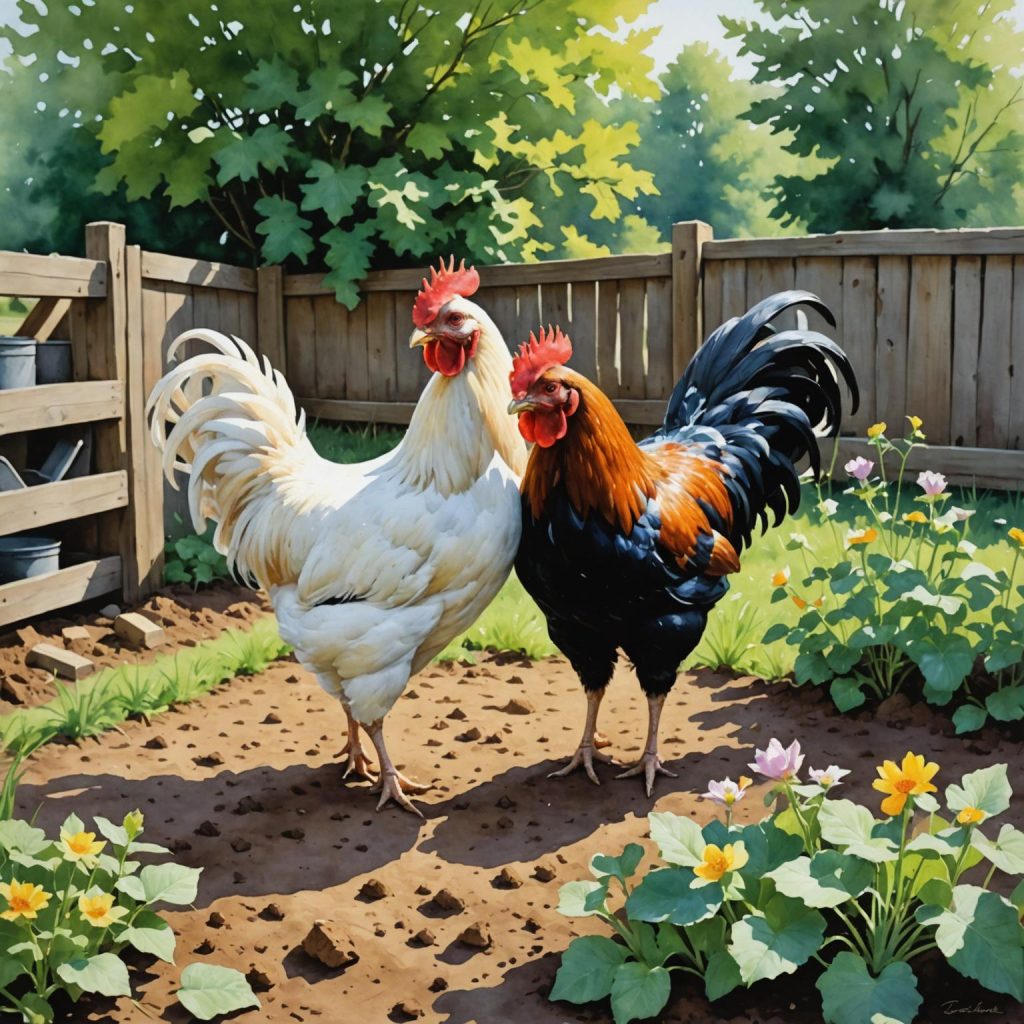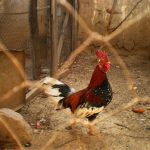Free range chickens are poultry that are allowed to roam freely and forage for food, rather than being confined to a small space or cage. This type of farming allows the chickens to exhibit natural behaviors such as scratching, pecking, and dust bathing. Free range chickens are generally healthier and produce better quality eggs and meat compared to chickens raised in confinement. They have access to a more varied diet, which can include insects, grass, and other plants, resulting in eggs and meat that are higher in nutrients such as omega-3 fatty acids and vitamin D. Additionally, free range chickens are less stressed and have a better quality of life compared to their confined counterparts.
In order to successfully raise free range chickens, it is important to provide them with a suitable environment that allows them to exhibit their natural behaviors. This includes providing adequate space for them to roam and forage, as well as shelter and protection from predators. It is also important to choose the right breeds for your specific space and climate, as some breeds are better suited for free ranging than others. By understanding the needs and behaviors of free range chickens, you can create a small yard that is conducive to their well-being and productivity.
Table of Contents
- 1 Designing a Small Yard for Free Range Chickens
- 2 Choosing the Right Breeds for Small Spaces
- 3 Providing Adequate Shelter and Roosting Space
- 4 Creating a Functional Feeding and Watering System
- 5 Implementing Proper Waste Management
- 6 Ensuring Safety and Security for Free Range Chickens in a Small Yard
Designing a Small Yard for Free Range Chickens
When designing a small yard for free range chickens, it is important to consider the space available and how it can be utilized to provide the chickens with the best possible environment. The yard should be large enough to allow the chickens to roam and forage, but also secure enough to protect them from predators. Fencing is essential for keeping the chickens safe and preventing them from wandering into areas where they could be harmed. Additionally, the yard should have areas of shade and shelter where the chickens can rest and seek protection from the elements.
In addition to providing space and shelter, it is important to consider the layout of the yard in order to maximize its functionality. This may include creating designated areas for feeding and watering, as well as providing roosting space for the chickens to sleep at night. By carefully planning the layout of the yard, you can ensure that the chickens have everything they need to thrive in their free range environment.
Choosing the Right Breeds for Small Spaces
When raising free range chickens in a small yard, it is important to choose breeds that are well-suited for this type of environment. Some breeds are more active and better at foraging than others, making them ideal for free ranging in a limited space. Additionally, certain breeds are more adaptable to different climates and can thrive in smaller yards with proper care.
For small yards, bantam breeds such as Silkies or Sebrights are popular choices due to their smaller size and gentle nature. These breeds are known for their ability to thrive in confined spaces and are often used in urban settings where space is limited. Additionally, some standard breeds such as Rhode Island Reds or Australorps are also well-suited for free ranging in small yards due to their active nature and ability to forage for food.
It is important to research different breeds and their specific needs in order to choose the right ones for your small yard. By selecting breeds that are well-suited for free ranging in limited spaces, you can ensure that your chickens are happy and healthy in their environment.
Providing Adequate Shelter and Roosting Space
In order to keep free range chickens safe and comfortable in a small yard, it is important to provide them with adequate shelter and roosting space. This includes a coop or hen house where the chickens can seek protection from predators and the elements, as well as roosts where they can sleep at night. The coop should be secure and well-ventilated, with enough space for all of the chickens to comfortably roost and lay eggs.
When designing a coop for free range chickens in a small yard, it is important to consider the size of the space and how it can be utilized efficiently. The coop should be large enough to accommodate all of the chickens, but also compact enough to fit within the confines of the yard. Additionally, it should be designed in a way that allows for easy cleaning and maintenance in order to keep the chickens healthy and comfortable.
Roosting space is also essential for free range chickens, as they need a safe place to sleep at night. Roosts should be elevated off the ground and provide enough space for all of the chickens to perch comfortably. By providing adequate shelter and roosting space, you can ensure that your free range chickens are safe and secure in their small yard.
Creating a Functional Feeding and Watering System
In order to keep free range chickens healthy and productive in a small yard, it is important to create a functional feeding and watering system that meets their needs. This includes providing access to fresh water at all times, as well as a balanced diet that includes grains, greens, and other natural foods. Additionally, it is important to consider how the feeding and watering system can be designed in a way that minimizes waste and keeps the yard clean.
When designing a feeding system for free range chickens in a small yard, it is important to consider how the food will be distributed and how it can be protected from pests and weather. This may include using feeders that can be hung or placed off the ground, as well as providing enough space for all of the chickens to access the food without crowding or competition.
Similarly, the watering system should be designed in a way that provides clean water at all times while minimizing waste. This may include using waterers that can be easily refilled and cleaned, as well as placing them in shaded areas to prevent evaporation. By creating a functional feeding and watering system, you can ensure that your free range chickens have access to the nutrients they need to thrive in their small yard.
Implementing Proper Waste Management
In order to maintain a clean and healthy environment for free range chickens in a small yard, it is important to implement proper waste management practices. This includes regularly cleaning the coop and yard to remove droppings and other waste, as well as disposing of it in a way that minimizes odors and pests. Additionally, it is important to consider how waste can be recycled or composted in order to benefit the overall health of the yard.
When managing waste in a small yard, it is important to consider how it can be efficiently removed and disposed of without causing harm to the environment or attracting pests. This may include using compost bins or designated areas for waste disposal, as well as regularly turning and maintaining compost piles in order to create nutrient-rich soil for the yard.
By implementing proper waste management practices, you can ensure that your free range chickens have a clean and healthy environment in which to thrive. Additionally, you can minimize odors and pests while creating valuable resources for your yard through composting and recycling waste.
Ensuring Safety and Security for Free Range Chickens in a Small Yard
In order to keep free range chickens safe and secure in a small yard, it is important to take measures to protect them from predators and other potential threats. This may include using secure fencing around the perimeter of the yard, as well as providing shelter and roosting space that is designed to keep out unwanted visitors. Additionally, it is important to regularly inspect the yard for potential hazards such as sharp objects or toxic plants that could harm the chickens.
When ensuring safety and security for free range chickens in a small yard, it is important to consider how predators such as foxes, raccoons, or birds of prey could potentially access the area. This may include using hardware cloth or other secure materials for fencing, as well as installing predator-proof latches on coop doors and windows. Additionally, it is important to consider how the layout of the yard can be designed in a way that minimizes potential hiding spots or access points for predators.
By taking measures to ensure safety and security for free range chickens in a small yard, you can create an environment where they can thrive without fear of harm or danger. This may include using deterrents such as motion-activated lights or sound devices, as well as regularly monitoring the area for signs of potential threats. By being proactive in protecting your free range chickens, you can create a safe and secure environment where they can live happy and healthy lives.
In conclusion, raising free range chickens in a small yard requires careful planning and consideration of their specific needs. By understanding their behaviors and requirements, you can create an environment that allows them to thrive while also ensuring their safety and security. From choosing the right breeds to implementing proper waste management practices, there are many factors to consider when creating a functional space for free range chickens. With careful planning and attention to detail, you can create a small yard that provides everything your free range chickens need to live happy and healthy lives.
Meet Walter, the feathered-friend fanatic of Florida! Nestled in the sunshine state, Walter struts through life with his feathered companions, clucking his way to happiness. With a coop that’s fancier than a five-star hotel, he’s the Don Juan of the chicken world. When he’s not teaching his hens to do the cha-cha, you’ll find him in a heated debate with his prized rooster, Sir Clucks-a-Lot. Walter’s poultry passion is no yolk; he’s the sunny-side-up guy you never knew you needed in your flock of friends!







